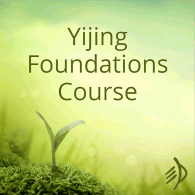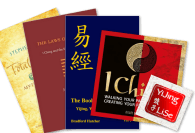There’s a splendid series of threads at the I Ching Community entitled ‘Memorising the I Ching’. Rosada and everyone who pitches in are travelling through hexagram by hexagram, describing what’s memorable about each line. Here’s a list of the threads so far; they’ve got as far as Hexagram 19.
Why would you want to memorise the I Ching? Rosada suggested it as a way to allow lines to come to mind without casting, “as if I can hear my heart talking to me.” I’d add that it’s also very useful at times to be able to cast at moments when you don’t have access to a book. Besides, it seems like a mark of respect.
And how might you go about it? Memorising 64 gua (configurations of lines), with their names, Judgements and Images, doesn’t seem too hard; I found that had happened without conscious effort after just a few years of divination. But all 64×6=384 lines? That can happen spontaneously, too, but it does seem a little trickier.
I think it helps to understand the line texts in some larger context. For instance, do the lines tell a story, as you climb through the hexagram? The lines of 53 work this way, as the wild geese settle at the border, on the rocks, and so on. Some lines show a different kind of pattern: if you remember that 28.2 is the older husband with a young wife, then it’s not so hard to remember that its mirror image, 28.5, is the upright husband with the older wife.
Then there’s the line in relation to its position in the hexagram, or its trigrams. The third book of Wilhelm/Baynes will generally ‘explain’ line meanings in this way, though the explanations don’t necessarily make anything more memorable. But it can be simpler: looking at
![]()
for example, it’s not hard to remember that the one firm line in the ‘inner centre’ is ‘in the centre of the army.’ And it often helps to remember that the first line’s ‘outside’ the action, the sixth line exceeds it in some way (whether by going beyond it as in 18.6, or simply overdoing it, as in 34.6), the threshold from third to fourth can be a place of fear and indecision, and so on.
What I personally find most helpful as a nudge to memory are the relationships between the lines and the hexagrams they point to, their zhi gua. The final line of 57, for instance, warns that in ‘rooting under the bed’ you can ‘lose your property and symbol axe’. Changing this line leads you to the Well (48), which is an endless resource. I find that people who ‘root under the bed’ at 57.6 insist on really ‘going into’ something, for instance wanting to explore to the limits of its potential. But potential, like the Well, is endless; you can try forever to fathom this, send your roots ever deeper, and forget all about your power to act.
Perhaps this is a helpful way to remember lines, or perhaps it’s just helpful for me. Anyway, please share your own perspective. With Hexagram 20 on the way, it seems a good moment to lend this series some more visibility. 🙂









After working twelve years in education at elementary and middle-school levels, I think the best way to memorize Anything is to make a song of it. I don’t know what it is about memory and music, but if you put something to music, you will remember it forever. Just look what happens when a song you haven’t heard for years (decades, even!) comes on the radio… you can immediately sing along with it! 🙂
Ok, for the I Ching it might be a LONG song….but still….
🙂
I forget where I read this, but there is already a way of memorizing the hexagrams on the fingers of your hands used by traditional Chinese street diviners.
I think the song idea is interesting, but for me the Yi is more like a story with a variety of characters, motives, and situations from beginning in 1+2 to anticlimax/new beginning in 63+64. Maybe it could be memorized as a story rather than as a song…
The Yi Jing is really the story of everything that is possible in the universe, isn’t it?
You know, Michelle, it’s been suggested that some lines of the I Ching actually are songs, or parts of songs?
It’s not always easy to find a narrative through the lines of a hexagram: some hexagrams seem ordered that way, some don’t. But perhaps their lines might interact as characters, creating a story that just isn’t necessarily read from 1 to 6?
Now waiting for someone to come out with 64 mini-ballads…
After many years with I Ching and the Tarot Ive considered memorizing but found that I prefer using books. Might have something to do with my love of books…..who knows.
I have approached Abigail Washburn around collaborating on a 64 songs for the I Ching in connection to a project I am working on. There’s always the 100,000 songs of Milarepa (Tibetan meditation practitioner) to inspire us. 🙂
Sounds like fun! Do keep me posted.